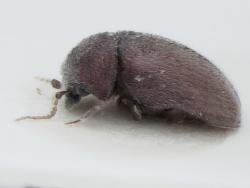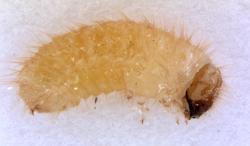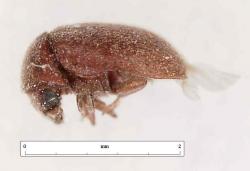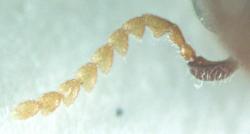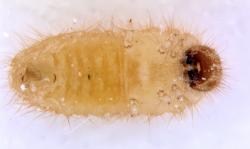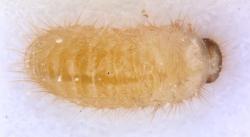Adult
Size
2.2 to 3 mm long.
Aspect
Sturdy ; oval, rounded shape.
Thorax and elytra covered in an inconspicuous pubescence of yellow-coloured flat bristles pointing to the rear end.
Finely punctuated pronotum and elytra, so that striation is barely visible, unlike in Stegobium paniceum.
Eleven-articled antennae; triangular, serrate articles (unlike in Stegobium paniceum).
At rest, head, thorax and appendices are concealed under the abdomen, which gives the insect (in profile view) a characteristic aspect that makes it possible to tell it from all the other species of the Anobidae family dealt with in this site.
Colour
Uniform and hued, ranging from chestnut yellow to brown, red-brown included


 Vrillette du tabac, Lasioderme du Tabac
Vrillette du tabac, Lasioderme du Tabac  Cigarette beetle Tobacco beetle
Cigarette beetle Tobacco beetle  Escarabajo del tabaco
Escarabajo del tabaco  Zigarettenkäfer
Zigarettenkäfer 